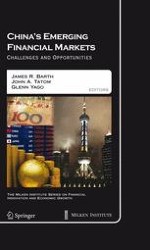2009 | OriginalPaper | Buchkapitel
Financial Institutions’ Lending and Real Estate Property Prices in China
verfasst von : Perry Wong, Diehang Zheng
Erschienen in: China’s Emerging Financial Markets
Verlag: Springer US
Aktivieren Sie unsere intelligente Suche, um passende Fachinhalte oder Patente zu finden.
Wählen Sie Textabschnitte aus um mit Künstlicher Intelligenz passenden Patente zu finden. powered by
Markieren Sie Textabschnitte, um KI-gestützt weitere passende Inhalte zu finden. powered by

 ) is a Chinese term used to describe development projects that have little economic value, instead showcasing “reform and economic progress” from new policy and/or new leadership.
) is a Chinese term used to describe development projects that have little economic value, instead showcasing “reform and economic progress” from new policy and/or new leadership.